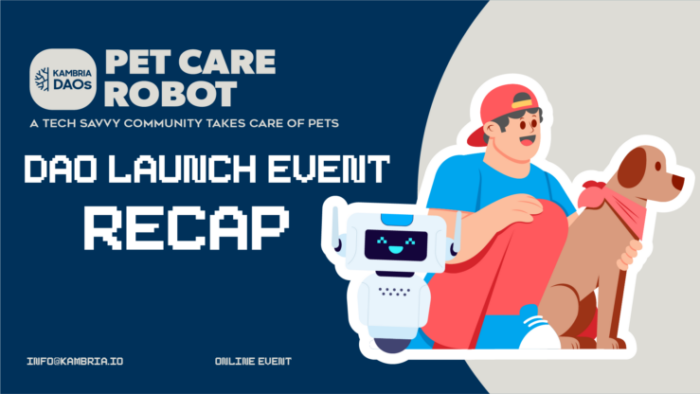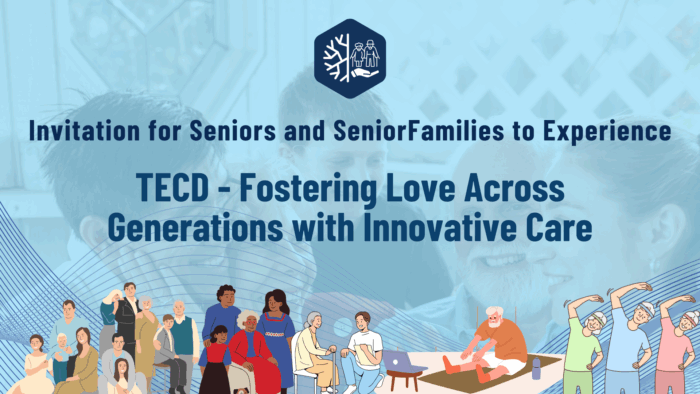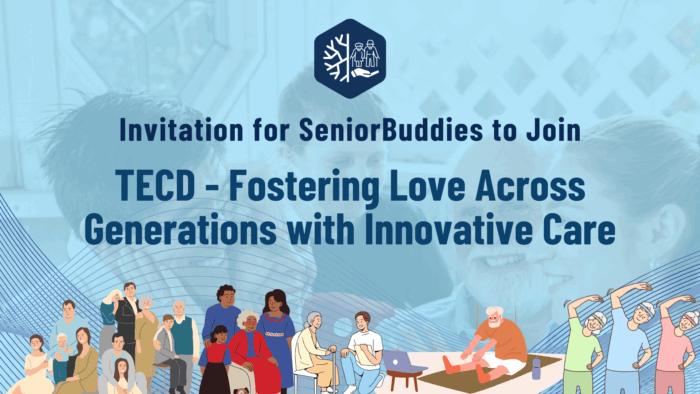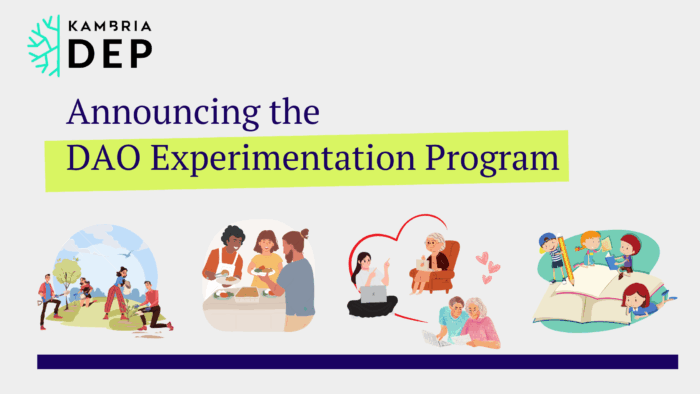KAMBRIA - On June 2, 2023, Kambria achieved a significant milestone by hosting the Pet Care Robot DAO Launch Event. This event marks the initiation of official DAO fundraising and serves as a platform for the Pet community to engage with Kambria's forthcoming milestones and activities. The event also provides Developer Teams an opportunity to showcase their proposed solutions for our cherished furry companions, gaining valuable insights from the DAO Judges Committee in this Decentralized Autonomous Organization (DAO) context.

1️⃣ Introduction
We would like to share the biographies of the Pet Care Robot DAO Judges Committee and two Developer Teams:
For the Judges Committee, we have 4 Experts that join the Launch Event
For 2 Technical Experts:
Mr. Zubayer Al Billal Khan:
He is an accomplished professional Engineer with expertise in robotics, embedded systems, drone development, and artificial intelligence. His focus lies in the intricate world of microcontrollers and intelligent devices. He passionately explores how these emerging technologies can revolutionize our lives, work, and even pet care through dedicated research and development efforts.
Mr. Vivekanand Prasad:
As a visionary Roboticist, Mr. Vivekanand envisions technology's potential to create a positive impact on the world. Beginning his journey as an Entrepreneur in educational Robotics in 2016, he has since empowered over 10k students with knowledge in Embedded systems, Drones, 3D printing, Robotics, and more.
For the Business Expert:
Mr. Prashanth Kumar Duggishetti:
As the CEO and Founder of Ellenox, he leads an inventive platform merging a product lab, startup incubator, and launchpad for early-stage ventures. With prior roles as a DevOps and Quality Engineer at Velo3D and co-founder of Dycap Media Solutions, he brings expertise from the 3D printing manufacturing and robotics fields.
About the Industry Expert:
Ms. Seema Subash:
She is a dedicated Animal Rights Advocate and the Founder of Pawse For A Cause, Malaysia's leading fundraising initiative uniting the entertainment community to support animal welfare. Her profound passion for animal rights aligns with the growing awareness of stray population concerns and the need for better education in this field. Additionally, she manages a farm that shelters nearly 100 rescues.
For the 2 Developer Teams:
SWO - Pet Smart Home and Gym (Arin Pet Gym):
The Team comprises a dynamic group of young individuals proficient in biology, robotics, electronics, and business. Their shared love for animals and scientific expertise drove them to create the innovative Arin Pet Gym. Recognizing the challenges of pet depression and hyperactivity, they developed a solution that benefits both pet owners and animal care institutions. Arin Pet Gym offers convenient training options for pets, aiding in their mental and physical well-being. This initiative contributes to a happier and healthier life for animals by providing exercise, play, and therapy opportunities.
Infinos:
Infinos Team represents Infinos Tech, a startup focused on crafting eco-friendly and functional products. Their aim is to contribute to sustainability by creating items that reduce waste and enhance people's lives. Departing from the abundance of human-oriented robotic solutions, their innovative proposal addresses the challenges of pet ownership. Their solution seeks to integrate pets seamlessly into families and friend circles, providing care even when the owners are away. This approach fosters a stronger bond between humans and animals, aligning with their vision of positive interaction.
2️⃣ Dev Teams’ Proposal Presentations and Judges’ feedback or questions
Kambria would love to share highlights of two Dev Teams’ Proposed Solutions; and Judges’ feedback, questions, and insights; as well as the Teams’ responses:
The 1st turn is SWO Team
SWO Team’s Presentation:
The second part of the Launch Event featured the presentation by the SWO Pet Smart Home & Gym Team. Their speech encompassed problem identification, introductions, their master plan, and references.
The team highlighted the issue of pet parents leaving their animals alone for extended periods, leading to boredom, inactivity, and related physical and mental problems. They emphasized the need for solutions to combat these issues and subsequently introduced their plan for a smart gym system. Their solution would utilize theta waves for managing mental disorders and data analysis for adapting to animal needs.
A team member with a biology background discussed the rationale behind using theta waves for therapy, citing scientific studies on its benefits. The ARIN robot's design includes three main modules: habitation, game, and AI modeling for customization and disease diagnosis.
Mr. Hoang Anh from the SWO Team presented their two-year master plan. In the first year, they aim to develop a core product kit and find initial customers. The second year entails expanding the product's functionality and enhancing social connections between pets and owners.
Their product lineup includes activities like biting a mole, returning a bone, catching light, jumping over circles, and pulling a rope. The proposed budget for their plan is $162,000.
The presentation concluded with a brief introduction to the team's background.
Judges’ feedback/questions & Team’s responses:
We would love to share the flow of the Judges and Teams’ discussion as below:
Mr. Zubayer:
- SWO highlights the need to avoid confining pets and offers solutions for their care during owners' absence.
- In societies like the US, the UK, and Europe, where dual-income families are common, the cost and marketing strategies for pet care solutions become crucial due to limited at-home supervision.
- Ensuring safety is important when using laser light, addressing progammability and precautions to prevent unintended consequences.
Mr. Vivekanand:
- The Team's impressive presentation emphasizes the importance of pet-focused products for enhancing happiness. Mr. Vivekanand's personal experiences show pets' emotional impact when left alone at home due to work commitments.
- Similar concerns, voiced by Mr. Zubayer, revolve around indoor usability of the product. The potential for pets to disrupt furniture or objects while responding to laser light is a major consideration.
- Battery-operated, AC-dependent electricity supply raises practical concerns.
- Affordability is crucial for widespread adoption, ensuring that the technology is accessible to a broader audience and not seen as a luxury.
SWO:
- Clarify the cost: it relates to development, not the eventual market price upon release.
- Suggest a flexible market approach: offer localized pet gym access as a service instead of selling the entire system.
- Collaborating with pet shelters and delaying customer versions indicates a focus on cost reduction through mass production and increased demand.
Mr. Vivekanand:
- Mr. Vivekanand raises a valid point about the contradiction in the solution proposed. If pets need owners at the gym, but the product is for home use, it raises concerns about addressing loneliness.
- Besides focusing on product development, it's crucial to define the target cost for market sales. Mr. Vivekanand recommends determining the target market to formulate an effective sales strategy.
SWO:
- The product serves more than entertainment; it addresses pets' loneliness and offers therapeutic benefits. The robot uses theta wave tech as a personal doctor to address mental health, focusing on well-being by treating depression and anxiety.
- Initially, the Team plans to test the product in gyms and shelters before making it available for customers. They aim to identify effective dog approaches and create user-friendly home products based on these insights.
- Safety is crucial, and the team plans comprehensive testing with dogs to identify appropriate games, whether automated or interactive. They emphasize simplicity and eliminating risks for dogs during play.
Mr. Prashanth:
- Mr. Prashanth finds the idea intriguing, focusing on the pet care industry's growth among millennials and Gen Z. He notes the rising preference for pets over children and the parallel role of pets in people's lives.
- He highlights a disconnect between the problem of pet loneliness and the proposed solution of going to a gym, seen as costly and substantial.
- Mr. Prashanth proposes crowdfunding the solution via a DAO platform, emphasizing efficient product delivery and a step-by-step approach.
- He recommends concentrating efforts on individual components, such as the theta wave technology, rather than spreading resources across multiple experiments. This approach would ensure a faster market entry with meaningful products.
SWO:
- The Team hopes to provide the best product for the pets and they want to build a vision for everyone to look at. Doing one thing at a time might be a good way, but the Team thinks that they can go all in a way. For example, they build this product for a shelter and they build this product to help pets in the shelter, and then to the business aspect after they know what is good or bad for the pets.
- Their Team is all about pet lovers and technical people, and with the DAO spirit, the Team hopes everyone can share with them and discuss the right direction.
Ms. Seema:
- Emotional Quotient (EQ) and its impact on the human-pet bond are crucial considerations for the product. Dogs learn best in social environments, either with other dogs or humans.
- Use positive language and avoid negative connotations like "cage" when discussing pet-related products. Maintain an upbeat tone when addressing animal-related topics.
- Targeting both pet-loving and non-pet-loving communities is essential. The Team should demonstrate how the product benefits not only pet owners but also those without pets.
- Clarify how the product will assist shelters in detail and consider integrating the product with pet-owner bonding, teaching them to use it at home.
- Utilize the understanding of theta waves in dogs to emphasize the importance of energy, frequency, and vibration in their well-being. Explore ways to integrate the product into the community rather than isolating it as a luxury item.
SWO:
- Initial focus on abandoned pets due to their physical and mental challenges. The Team plans to work with shelters, improve their health using the product, and then promote them on platforms like PetStars to gain community support and potential donations.
- Proposed collaborative AI model training, drawing inspiration from community-driven tasks like AI and image labeling. The goal is to raise awareness, involve the community, and enhance the well-being of abandoned pets. Expect the product to attract pet owners due to its positive impact and community involvement.
- Consideration of a multiplayer module where pets interact with each other and with humans at the gym. Future plans involve version two of the product for home use, including language understanding for pets.
- The product highlights its role in making pets more human-friendly by teaching them basic commands like sitting, shaking hands, and playing fetch, fostering better communication between pets and their owners.
Ms. Seema:
- Imprinting, where a puppy or dog forms a deep connection with a human, is a crucial consideration. Training a puppy separately from its owner might hinder the imprinting process, which is essential for a strong human-pet bond.
- The need to emphasize the human element and address why pet owners should consider the product. People invest significantly in their pets, but the product must demonstrate its value to both pets and their owners.
- To integrate the product into daily life, a community angle is crucial. The Team should appeal to pet owners, animal welfare communities, and corporations for investment and partnerships. Identifying the target audience for the first year is important for effective marketing.
- While price matters, the product's benefits should outweigh the costs for pet owners. Demonstrating advantages for both pets and humans is necessary to encourage spending on the product.
SWO:
- Dr. Do Ngoc Thanh shared his experience of raising dogs in Australia and facing the expense of pet-sitting when at work. The project's aim is to enhance pet care quality by utilizing equipment to support outdoor activities and playtime for dogs.
- The product's potential extends to easing hospital burdens. The initial focus is on AI detection, connecting with Hanoi Medical Hospital and Agriculture University.
- To avoid overwhelming the project, the team suggests taking a gradual approach, with an emphasis on AI and the moral community. Seeking guidance from medical professionals and universities is essential for model development.
***
The 2nd turn is Infinos Team
Infinos Team’s Presentation:
- The Infinos Tech Team is presenting another solution in this session. Their presentation covers the pet care robot, product details, marketing strategies, operational and financial stages, and a brief team introduction.
- They began by introducing Infinos Tech LLP, highlighting their strong technological background, experience with diverse clients, and collaboration with the Indian government.
- The motivation behind the Pet Care Robot creation was explained. Pets are cherished family members, necessitating comprehensive care. However, integrated care choices for pets are limited, causing inconvenience in daily activities and bonding issues. This prompted the team to seek long-term solutions. They also discussed technological parallels between past and future pet care.
To address these concerns, the Infinos Tech Team aims to create a sustainable, easily accessible solution. Their Pre-Climax pet care robot serves as a versatile solution, offering features like waste cleaning, temperature-controlled resting area, interactive play, feeding, watering, and portability.
- Mr. Sourav from the team detailed the technology stack development, including IoT remote control, temperature control, energy-efficient data logging, tailored compartments, eco-friendliness, and patent progress.
- They outlined a 15-month strategy with four stages, focusing on proof-of-concept, module integration, system enhancement, and a final MVP.
- The team's total financial requirement is $162,000, divided into different development stages.
- Numerous marketing and sales approaches were presented, supported by the growth of the $1.41 billion pet care market. They discussed global and Indian market strategies and addressing consumer preferences.
Judge's feedback/questions & Team’s responses:
We would like to share the flow of the Judges and Teams’ discussion as below:
Mr. Zubayer:
- It's a very extraordinary project.
- What is the robotic functionality of the devices? Is it doing the cleaning automatically itself or is it feeding automatically? Mr. Zubayer would like the Team to clarify how they can put all things including pets, food, and other stuff together. Can it be called another pet-carrying cage with some extra functionalities?
Infinos:
- Human-robot collaboration is the Team's focus.
- The product's semi-autonomous or autonomous nature is influenced by the uncertainty of pet behavior and the need for human control over certain aspects. Full autonomy is limited due to potential issues.
- Robotic casing involves a time-bound scenario where the robot requires food, stored in a casing for one or two days. This basic casing may not be suitable for extended durations.
- The compact space integrates necessary components, and the detachable bed adds versatility, suitable for different settings.
- The casing's size is adjustable for specific needs. Some customers may require only a food tray, while others need customization for their pets. The Team aims to create a flexible, customizable box.
- The system can function as a pet care robot and a portable travel case when components are removed, offering flexibility in its usage.
Mr. Vivekanand:
- Mr. Vivekanand questions the feasibility of using a box for pet travel, citing concerns about suitability as pets age. He stresses the importance of considering human and pet comfort in technology development.
- Traveling with a pet in a box is seen as potentially uncomfortable, with a need for proper care during the journey.
- He advises prioritizing the pet's emotional well-being and overall care over emphasizing pet carrying.
- While he appreciates features like feeding, cleanliness, entertainment, and rest, Mr. Vivekanand suggests that adding a carrying case may reduce the product's appeal.
Infinos:
- The robot doesn't carry the pet; instead, the pet accompanies the robot, similar to carrying luggage.
- The pet care robot is portable and intended for travel, combining a travel case, a pet care robot, and dedicated pet luggage. Its focus is on providing convenience and support for pets during travel.
- The design aims to enable pets to travel alongside their owners with dedicated luggage, ensuring their care and support wherever they go.
Mr. Zubayer:
- So that means if traveling from one country to another, the owners have to take pet-carrying luggage as well as the robot for my pet?
- That's another issue allowed on a flight. That means if the owner wants to take these things, it's another luggage along with their pet.
Infinos:
- Firstly, the accessories are a collection, and not every accessory needs to be carried all the time. Together, they demonstrate the various options available.
- Importantly, the intention is not to restrict the pet within the box.
- The Team's approach is a phased one. In the first stage, they prioritize fundamental needs and hardware sustainability. In the second stage, they make enhancements and customizations based on specific requests from pet owners. Currently, they are presenting the solution comprehensively, highlighting the full range of available features.
Mr. Zubayer:
- The weight of additional luggage when traveling abroad can be burdensome for families, so minimizing weight is desirable. This is mentioned in relation to the product being discussed.
- Despite the weight concern, Mr. Zubayer expresses overall satisfaction with the product, describing it as fantastic and incorporating all the desired features, including a modular base and various items for cat care, such as toys and cleaning systems.
Mr. Prashanth:
- From a business perspective, Mr. Prashanth sees the product as having a good model with many small replaceable pieces that customers can purchase. However, he considers it more of an animal toy with added features such as a bed, rather than a true robot.
- He emphasizes the importance of providing a sense of home for animals during travel and suggests that incorporating more robotics and IoT elements could make the product more sustainable and appealing. Incorporating such features could enhance the product's value and feasibility.
- The benefits of a modular system for pet comfort emphasize the potential advantages of moving towards a more autonomous or semi-autonomous state.
Infinos:
- The focus is on addressing problems and providing solutions based on specific requirements. The approach is semi-autonomous, taking into account the limitations of complete autonomy in certain scenarios such as medical robotics.
- The product aims to continuously improve and adapt based on feedback and new knowledge about pets. Certain aspects will be fixed, while others can be remotely controlled using IoT technology, allowing features like scheduled feeding and water availability. The product emphasizes learning and development, with the ability to adjust and customize based on individual pet behavior and routines.
- The mechanical aspect of the product is acknowledged, as it needs to cater to a generic range of pets beyond just dogs and cats. Modularity is highlighted as a way to accommodate different needs.
- The product's potential extends beyond the B2C market, with possibilities mentioned such as incorporating it into ambulances or other contexts where pet care is necessary.
Mr. Prashanth:
- The importance of not trying to make the product suitable for every type of pet and avoiding feature overload.
- The recommendation is to focus on customizing the product for one particular pet initially before expanding to other animals. He suggests the Team prioritize building one or two essential features that work well for the targeted pet and then gradually expanding to include other stuff.
Ms. Seema:
- Ms. Seema mentions the importance of considering the future of pet travel and the advancement of pet-friendly services and destinations. Has the Team done the research for the future of travel for pets, and researched airlines that are moving into pet-friendly services and travel destinations that may be increasing?
- The need to address the potential slow rise in the frequency of using the product and how to commercialize it effectively. So how does the Team see the commercialization of the project in parallel with the advancement in travel for pets? How will they cover the gap between slow adoption and commercial viability?
- Will all the extra facilities like food be necessary for pets traveling in cargo, considering that they are usually given sleeping tablets or anesthesia? Concerns regarding the use of sleeping tablets or anesthesia when pets travel in cargo and whether the extra facilities provided by the product would be necessary.
- The potential suitability of the product for pet relocation companies, which could provide a human presence and address safety concerns during transportation. How would the product cater to pet relocation companies that move pets without their owners? How would the Team ensure a human presence in case of emergencies?
- The need to ensure safety, security, and compliance with animal welfare specifications and requirements in different countries. How would the Team address the safety and security concerns of pet owners who want to trust their product to keep their pets safe during travel? How do they plan to meet the animal welfare specifications and requirements regarding the space needed for caged animals during travel?
- The marketing plan for the product and addressing the reasons why pet owners would choose to buy multiple sizes. Does the Team have a marketing plan that would incent
Ms. Seema:
Besides the above questions raised for the Infinos, Ms. Seema also shares more suggestions with the Team:
- Considering the perspective of the worst competitor and worst critic when evaluating the product.
- Emphasizing the need to be tough on oneself and identify potential long-term weaknesses.
- Acknowledging the industry's early stage and the importance of prioritizing the best for pets.
- Encouraging critical thinking and playing devil's advocate to address questions and weaknesses.
- Suggesting a focused approach, mastering one product before expanding to subsequent phases.
- Using the success of the initial product to gain trust and secure funding for further development.
- Emphasizing the importance of quality over quantity and proving commitment to not waste resources.
- Highlighting the need for thorough research on competitors and understanding the global landscape.
- Moreover, Ms. Seema expresses belief in the potential of the product for pet relocation companies but also raises uncertainty about its appeal to individual pet owners.
- She recognizes the demand and growth in the pet relocation industry and highlights the market potential and opportunity for the product within this industry.
Infinos:
- The Team notices that existing pet care robots are primarily designed for home use and recognizes the need for pet care solutions during travel or when the owner is away for an extended period.
- They are considering the idea of incorporating pet care robots into travel gear to provide continuous care during trips. They will explore the concept of a subscription-based model similar to Uber or Ola, where users can rent the pet care robot for the desired duration.
- Proposing the option of delivering and reusing the same product for different travel destinations, and acknowledging the need for further research to validate the viability of the proposed model.
Ms. Seema:
- She raises a concern that the product may not have a significant impact or wide coverage.
- Ms. Seema advises focusing on a specific aspect where they can rise above the competition and target a niche market.
- She encourages the Team to think about the needs of travelers and frequent travelers and identify a product or feature that addresses those needs.
- Comparing the importance of a good idea to avoid wasting time, even if it seems small or insignificant. She suggests researching and speaking with frequent travelers who have pets to identify potential needs that align with the project.
- Moreover, finding a product-market fit and considering partnerships with pet supplier companies or chains are also important points.
- Furthermore, Ms. Seema encourages thorough troubleshooting and playing devil's advocate to address any potential issues or concerns.
Infinos:
- As in the Team’s presentation, they proposed a three-stage product plan, including a home-based solution, a travel-based solution, and a multi-segment expansion based on feedback and testing.
- Infinos emphasizes focusing on one segment initially, potentially starting with dogs or cats.
- They also mention the need for product-market fit and cost analysis, aiming for a price range between $600 and $2,000, considering customization and additional accessories.
- Comparing the expected price range to that of a good laptop, and indicating an interesting and reasonable average value.
3️⃣ Kambria’s Keynote Speech
In this section, Ms. Lien - CEO of Kambria presented an introduction and initiation of the Pet Care Robot DAO fundraising campaign.
First, she shared an overview of the DAO fundraising approach. As per DAO financial framework, The fund contributed by DAO members will be allocated 55% to Dev Team for Solution development, 30% for Solution commercialization, including marketing & business development works in the pre-revenue stage, and 15% for Kambria with the DAO organizing work. The Revenues from solution services will be allocated 70% for Service implementation and 30% to DAO fund contributors. The Kambria DAO LP tokens are Revenue Sharing Tokens that will bring more benefits to DAO members. They will be rewarded instantly at the time of recording revenues.
Besides that, Ms. Lien mentioned the Kambria DAO’s fundraising approach with LP token: As Kambria is using XDAO as a platform for DAO creation and management:
- The Private offers for big investors, teams, and partners. And Public offers for the community to participate.
- The typical fund goal of each DAO is $3M for multiple product cycles
- The number of DAO LP tokens to be issued is 10M. So LP token price is $0.3.
- Currencies to buy LP tokens are USDT or KAT with a CMC rate at the time of purchase. For example, if the KAT price is $0.03 then 1 LP = 10 KAT.
- In accordance with common practices, we will limit withdrawals in the first year to reduce early-stage risks using vesting mechanisms.
- And DAO LP tokens will be listed in the 2nd year.
Secondly, Ms. Lien presented the DAO governance approach. Among DAO members who hold LP tokens, the top fund contributors and most active members will join the DAO Council to make decisions for the DAO. Kambria DAO’s governance approach with GT token are:
- The total of governance tokens or GT of a DAO is 1000. Whenever a new member joins the Council, GTs are minted and issued to them accordingly.
- Quorum is 70%, meaning, any vote in the DAO needs 70% of total GTs minted at that time to activate.
- 40% or 400 GTs will be allocated to big fund contributors. Every investor holding at least 5% LP tokens will join the DAO Council. The GTs they have will be synced with their current LP tokens
- 40% or 400 GTs will be allocated to the most active LP token holders in terms of their participation in DAO businesses. Kambria will feature a point reward system in which DAO members earn points for participating in DAO activities. Top Active Members will be appointed to the DAO Council for a one-year term. Each member will have four GTs distributed evenly. This group should be diverse in terms of locals and knowledge, as they will be the country leaders of DAO hubs or subDAOs in later phases.
- And the last 20% or 200 GTs will be allocated to Kambria as the Organizer to orchestrate the development of the Kambria DAO model in the early stage.
Ms. Lien concluded her speech by launching the first fundraising campaign for the Pet Care Robot DAO, Alpha Campaign. In overview, the fundraising goal for the Launching campaign is 15% of the total goal for the 1st product cycle. The aim is to add $450K to the DAO fund, with the LP tokens to be issued totaling 1.5M over the course of 2 months. Once this goal is completed, the selected Dev Team will commence the solution development. Subsequently, the DAO Council will be formed 6 months after the vesting progress reaches 50%.
She also announced our upcoming Animal Kingdom NFT collection sale on NFTify. This event is a great opportunity for participants to contribute funds to the DAO by bidding on and purchasing these NFTs. NFT owners will receive the NFTs they bought and DAO LP tokens equivalent to the auction amount with a up to 20% discount.
4️⃣ Q&A section from the Community
Via Registration Forms that Kambria received, we noted key questions and had the support to share the answers from Ms. Lien Cao, CEO of Kambria.
🔸 The first two questions are from Mr. Cuong, who is one of Kambria Community’s active members. His questions are “Can I invest by using both KAT ERC20 and KAT Bep20?” and “The price of KAT is fixed for all time investing or calculated every day?”
- Because each DAO can only be on one chain, we set up the Pet Care Robot DAO on Ethereum. So fund contributors can buy the PCRD LP tokens with KAT ERC20. Note that we already have KAT ERC20 listed on KuCoin since 2018.
- While the Ocean Cleanup Robot DAO and the Mine Clearing Robot DAO are set up on BSC, fund contributors can buy these DAO LP tokens with KAT BEP20 recently listed on the ProBit Global exchange.
- And the currencies to buy LP tokens are USDT, or KAT with a CMC rate at the time of purchase.
- You can check our step-by-step instructions on “How to join” on the DAO Token Sale page.
🔸 “What is the profit?” is the second question from Mr. Bedaso Winso
- So for Kambria DAOs, each DAO is a community of a technology solution, that the DAO members will decide on and contribute to the development and commercialization of it, and get revenue sharing when the solution is commercialized.
- For example with the Pet Care Robot DAO, after the development phase to develop a pet care robot solution, we will go to the second phase to commercialize the solution. DAO members in each country can team up to manufacture and sell products locally, or they can implement pet care services with these robots.
- 30% of revenues from solution services will be shared with the DAO fund contributors. Note that while traditional businesses have a profit-sharing model, for Kambria DAOs, we have a Revenue Sharing model which will bring more benefits for DAO members. They will be rewarded instantly at the time of recording revenues.
- We hope that with Kambria DAOs, our community not only makes social impacts but also builds sustainable businesses.
🔸 Our third question comes from Mr. Harrison Michael, which is about the Purpose and Aim of the DAO
- To answer this question, we would like to start with the Kambria vision: We aim to shape the future of technology where technology is open and contributes more to society.
- Our approach is to foster open innovation - democratize and decentralize the ownership, development, and commercialization of technology.
- One of our initiatives is Kambria DAOs, a way for the community to co-own technology. So each DAO is a community of a technology solution, using blockchain to facilitate decentralized autonomy. By this, we can empower the community with trust, transparency, and automation, and enable open-source solutions to be commercialized by their community.
- For more information about how we are doing that, please visit our website and join the Kambria Discord community.
Link: https://youtu.be/DGbF-dp4_2M?list=PL85P8RFnNEmLznDsNSfoaQYCkIPDotYMU
5️⃣ Next milestone
On Jun 16, 2023, we will kick start the Animal Kingdom NFT Collection Sale on NFTify for both ETH and BSC.
Here is the link to the full session: https://youtu.be/Xf_6Okgqmew?list=PL85P8RFnNEmLznDsNSfoaQYCkIPDotYMU
Read more about Kambria DAOs: https://blog.kambria.io/a-way-to-co-own-a-technology/








